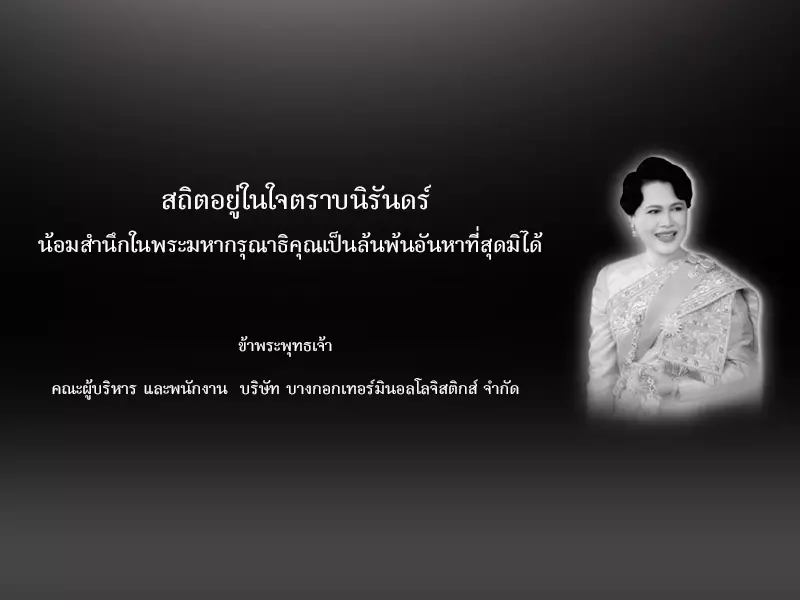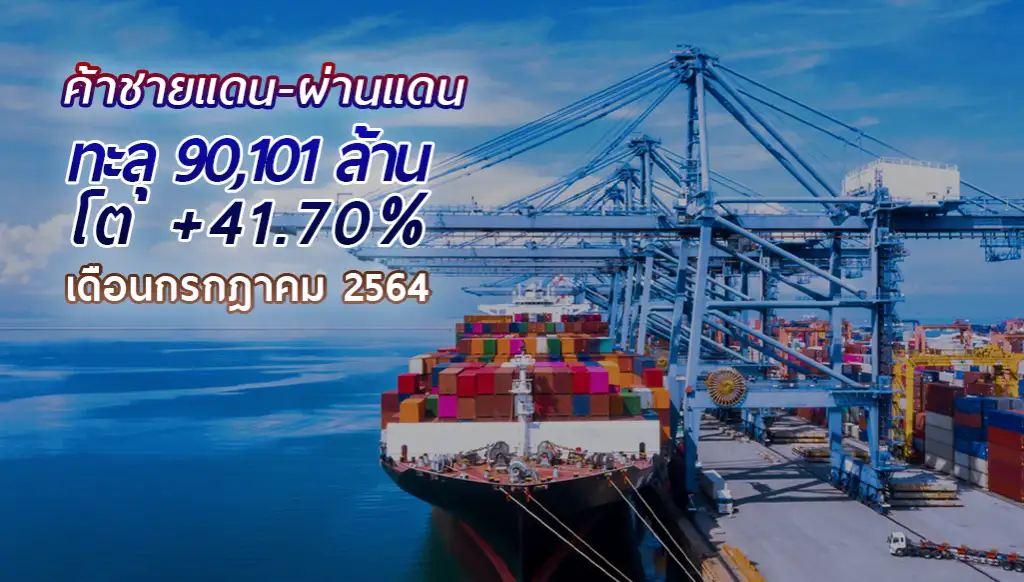



Thailand's export figures via border trade and cross-border trade in July 2021 were positive in all 7 markets.
Thailand’s border trade and cross-border trade in July 2021 were positive in all 7 markets: Malaysia, Myanmar, Laos, Cambodia, China, Vietnam and Singapore.
The country with the highest positive export figures through border trade and transit trade in July 2021 is China +126.44%, fresh fruits and dried fruits +348%, total value 15,000 million baht.
Mr. Jurin Laksanawisit, Leader of the Democrat Party, Deputy Prime Minister and Minister of Commerce, Mrs. Mallika Boonmeetrakul Mahasuk, Advisor to the Minister of Commerce
Mr. Keerati Ratchano, Director-General of the Department of Foreign Trade, revealed the overall figures of exports through border trade and cross-border trade combined in July 2021 with a value of 90,101 million baht, an increase of 41.70%, and the overall figures of exports through border trade and cross-border trade for 7 months totaled 591,051 million baht, an increase of 37.88%.
For exports through border trade, the 4 countries together have a value of 40,416 million baht + 10.55%. Exports through border trade in the remaining 3 countries, China, Vietnam and Singapore, have a combined value of 49,685 million baht + 83.84%, with Malaysia + 17.95%, Myanmar + 10.65%, Lao PDR + 8.08%, Cambodia + 5.12%, China + 126.64%, Vietnam + 1.63% and Singapore + 59.85%.
Mr. Jurin mentioned the factors that led to positive export figures as follows:
In terms of negative factors from the COVID-19 situation, Malaysia has increased the strictness of border imports through Thailand, which has affected rubber exports and has had a continuing impact on domestic rubber prices, even though the prices are better than in the past, from 15 baht to 24 baht for the price of rubber cup lumps.
In the near future, there will still be checkpoints that are about to open. The Director-General of the Department of Foreign Trade negotiated with the private sector and each province. The conclusion was to make a plan to open checkpoints with Laos in 5 provinces: Chiang Rai, Loei, Nong Khai, Nakhon Phanom and Mukdahan. As for the Pak Saeng checkpoint, Na Tal, Ubon Ratchathani Province
It is in the detailed stages and may be one of the first checkpoints to be opened. In addition, Tak Bai and Buketa checkpoints in Narathiwat Province will use the same model as the Lao border checkpoint.
This year’s target of +3.6% has exceeded expectations, as the first 7 months, from January to July, have been positive at 37.88%.
Data source: Department of International Trade